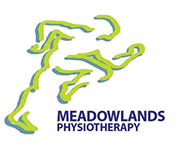IDN
IDN stands for Integrated Dry Needling and is also known as dry needling. This scientifically based technique has been proven to reverse the shortened muscles that cause myofascial pain syndromes. These chronic pain conditions occur in the musculoskeletal system and are difficult for doctors to diagnose because they leave no obvious signs of injury, tissue damage or inflammation.
IDN has similarities to acupuncture, however it is a distinctly different technique. IDN uses needles adapted from traditional acupuncture to better stimulate shortened muscles.
Meadowlands Physiotherapy is one of only a few clinics in Ancaster with health care practitioners who are trained and certified in IDN techniques. We use IDN to help our patients experience muscle relaxation and get relief from their chronic pain.

The History of IDN – Grounded in Western Medical Science
IDN is grounded in Western medical science, and has a solid foundation in the radiculopathic model of pain, which is now supported by many experts in the field.
IDN was first developed by Dr. Gunn while he was a physician at the Worker's Compensation Board of British Columbia in the 1970's, where he investigated a large number of mysteriously stubborn cases of musculoskeletal pain. After frustration with the ineffective modes of treatments at his disposal he developed the IDN treatment, which uses acupuncture needles because they are the thinnest implements available that are designed to penetrate deep within muscle tissue. IDN uses these thin needles to specifically target injured muscles that have contracted and become shortened from distress.
What is the Difference Between IDN and Acupuncture?
IDN is comparable in some ways to acupuncture; however, there are a number of important differences:
- IDN requires a medical examination and diagnosis by a practitioner knowledgeable in anatomy
- Needle insertions are indicated by physical signs and symptoms, not according to predefined, non-scientific meridians
- The effects of IDN are usually experienced immediately.
Your IDN Examination
If you suffer from chronic muscular pain the first step will be to undergo a thorough IDN examination, which is covered by most health insurance plans.
IDN relies heavily on a thorough physical examination of the patient by a health care practitioner who is specifically trained to recognize the physical signs of neuropathic pain. This physical examination is indispensable since chronic pain is often neurological as opposed to structural, and therefore, undetectable with X-rays, MRI Tests, Bone and CT Scans. Failure to recognize the physical signs of neuropathic pain can result in an inaccurate diagnosis, and thus, a poor starting point for physical therapy.
IDN Treatment – What to Expect
IDN treatment involves dry needling of affected areas of the body without injecting any substance. The needle sites are often:
- At the epicenter of taut, tender muscle bands
- Near the spine where the nerve root may have become irritated and supersensitive
Does IDN Hurt?
Penetration of a normal muscle is painless; however, a shortened, supersensitive muscle will ‘grasp’ the needle in what can result in a cramping sensation. The result is threefold:
- A stretch receptor in the muscle is stimulated, producing a reflex relaxation (lengthening).
- The needle also causes a small injury that draws blood to the area, initiating the natural healing process.
- The treatment creates an electrical potential in the muscle to make the nerve function normally again.
The needle used in IDN, by stimulating muscle spindles, essentially becomes a specific and unique tool for the diagnosis of neuropathic muscle pain.
The goal of IDN treatment is to release muscle shortening, which presses on and irritates the nerve. Supersensitive areas can be desensitized, and the persistent pull of shortened muscles can be released.
Is IDN Safe?
Yes. IDN is absolutely safe and very effective for releasing shortened muscles under contracture, thereby causing mechanical pain from muscle pull. IDN, in effect, treats the underlying neuropathic condition that causes the pain.
Does IDN Work?
When competently performed, IDN has a remarkable success rate, as proven by the improvement of symptoms, even for chronic back pain.
Don’t live in pain any longer. Call us today to book your IDN assessment and get back to a pain free life.
Additional Resources
For more information on this specialized treatment please visit:
FAQs
(1) Is IMS the same as dry needling?
Intramuscular Stimulation (IMS) is a type of dry needling using acupuncture needles inserted into tight muscle bands. It was developed by Dr. Chan Gunn to treat chronic pain syndromes that affect the musculoskeletal system.
(2) How painful is dry needling?
The actual inserting of the needle does not hurt—the needles are very thin. Sometimes the muscle will twitch when you put it in, and it can feel sore if that happens. You usually will feel a little muscle ache or soreness for a day or two after that feels like you worked out that muscle.
Explore More on Integrated Dry Needling
What to Expect at Your Integrated Dry Needling Treatment
When you have pain, a muscle knot, reduced blood flow, or other muscle issues, integrated dry needling (IDN) might be...
Read PostTalking About TMJ Dysfunction
If you have jaw, face or neck pain, Meadowlands Physiotherapy can help! TMD is treatable and treatments can relieve...
Read PostDry Needling vs. Acupuncture: What’s the Difference?
If you have chronic or acute pain, you may have considered both dry needling and acupuncture for pain relief. However,...
Read Post


